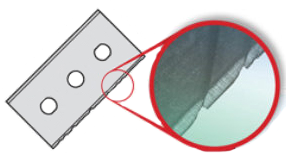
It is important to understand the different types of wear in industrial applications. Abrasive and adhesive wear are the main wear types on industrial razorblades, impacting blade lifetime, scrap and machine downtime.
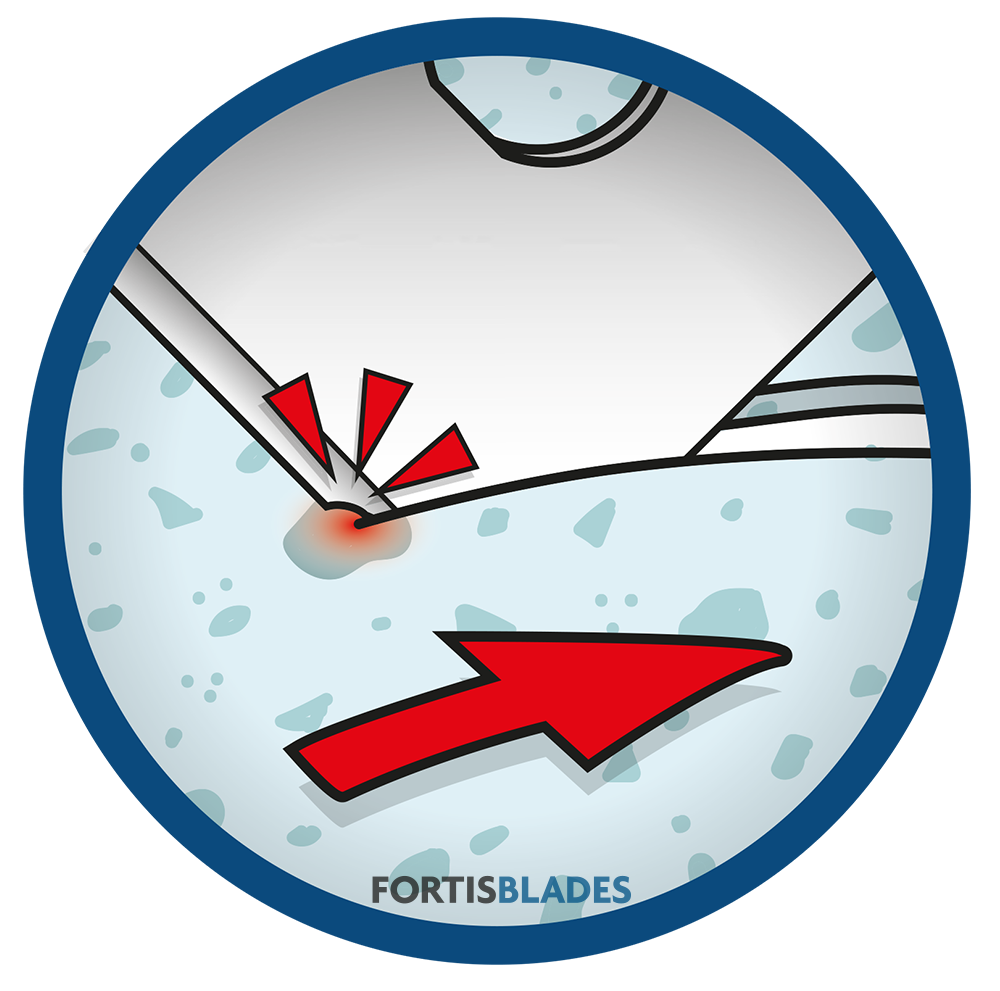
Abrasive Wear
What is abrasive wear?
Abrasive wear is a degradation process seen when hard particles impact the fragile blade edge at a high velocity, creating erosion-like wear. Essentially, one surface acting as a cutting tool against the other.
Influences
The primary culprits include hard particles or impurities that come into contact with blade edge. These particles are inherent in the material being processed, typical examples are colorants, fillers, recycling residues.
How Abrasive Wear Influences Razor Blades
When a razor blade is exposed to a hard particle present in the processing film, abrasive wear comes into play. This hard particle collides with the fine blade edge with impact depending on the web speed. Multiple impacts finally lead to material loss, eventually culminating in razor blade dulling and disrupting its slitting ability.

Adhesive Wear
What is adhesive wear?
When sliding surfaces come into contact they generate friction, because the surfaces try to interlockwith each other. The degree to which they interlock is the friction coefficient. The friction causes adhesive wear. When the blade is exposed to this wear for a longer time it becomes dull, this leads to poor slitting quality.
Influences
As main influence of adhesive wear we see the industry's shift towards thinner plastic film. While it might look paradoxal that thinner film generates more friction, it is actually true. In order to use thinner film but with same quality and durability, stonger molecular bonds within the film are needed. The stronger the bonds within the film, the more friction is generated when slitting, resulting in more adhesive wear. Plastic films come in all sorts and have a different coefficient of friction towards the razor blade surface at different pressures. The higher the resilience of the plastic, the more adhesive wear can be expected.
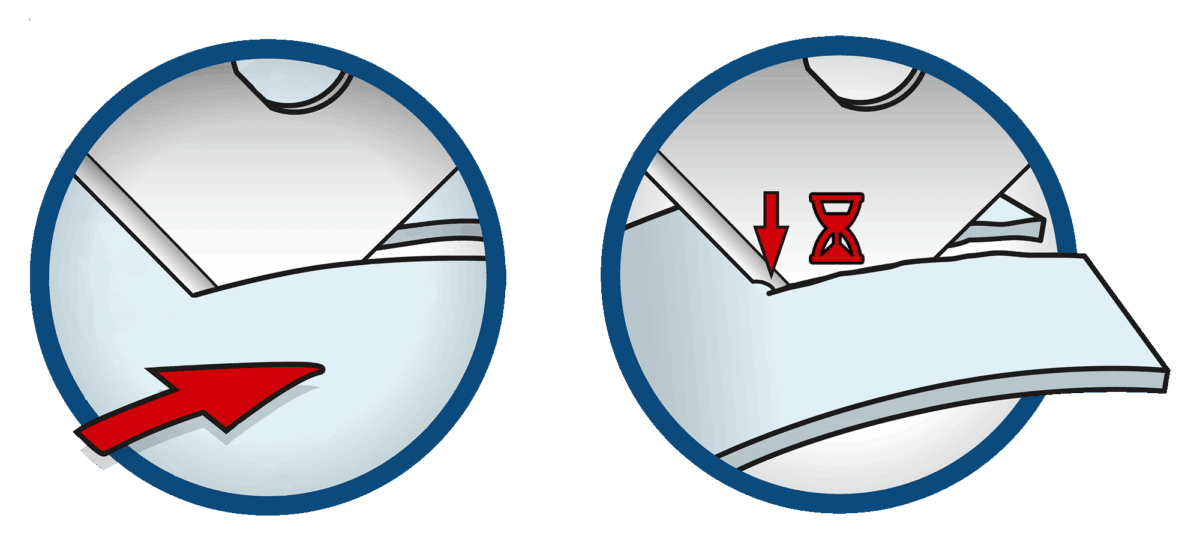
How adesive wear influences razor blades
During the slitting of material, an interlock is formed between the blade edge and the material it is slitting. As the material passes through at high velocity these interlocks are formed and broken again, leading to material transfer or the gradual removal of the blade's sharp edge. The blunting results in poor slit quality.
How to Improve Razor Blade Lifespan?
Understanding the mechanics of abrasive and adhesive wear lends us the insight needed to mitigate it. The presence of hard particles is correlated to the lifespan and efficiency of a razor blade. To fight abrasive wear, advanced solutions are needed, like the use of harder blade materials or protective coatings. To minimize adhesive wear, we reduce the friction between blade and film by applying a dedicated smooth coating on the blades surface.
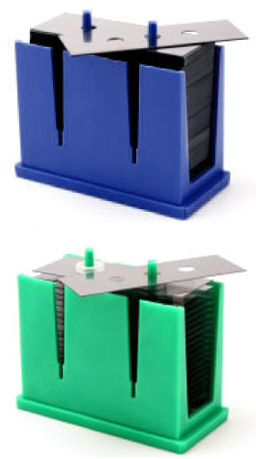
Industrial Razor Blade Material
Both the Fortis and Fortis+ blades are made out of high alloyed tool (knife) steel. Thermal treatments lead to overall high hardness but more importantly forming of extreme hard carbides that define the blade’s wear resistance. These advanced blades exhibit superior wear resistance and longevity compared to conventional steel blades.
Industrial Razor Blade Coatings
On top of the high quality steel, Fortisblades applies the most advanced coating technology to further improve the wear resistance of the cutting edge. The specific combination of the blade material and coating is selected to achieve the highest performance known to the market. Both the Fortis and Fortis+ range are equipped with an ultra hard and smooth coating to improve the razor blades lifetime.
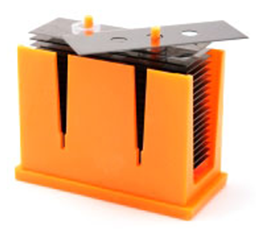
Solid Ceramic Razor Blades
The ultimate hardness and durability is realized with Fortius blades: solid ceramic blades where selection of composition (grades) plays a vital role to combine hardness with requested toughness. In that sense a selection of Tungsten Carbide and Zirconia Ceramic has been engineered.
Want to Find the Best Razor Blade for Your Production?
Contact us and together we will find a solution